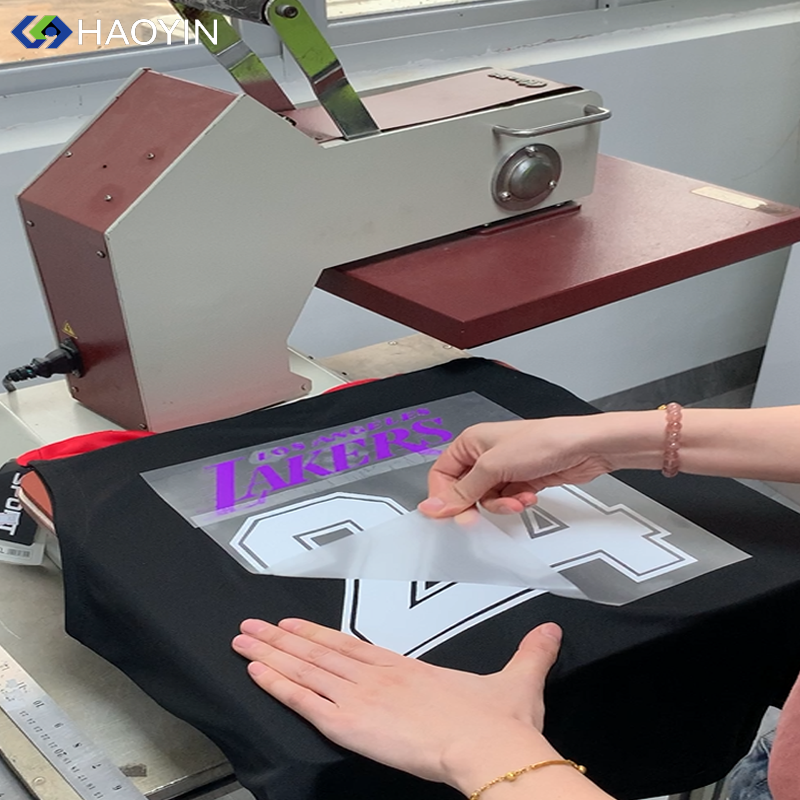Heat transfer vinyl (HTV) may curl or lift at the edges during cutting due to several factors. Here are the most common causes and solutions:

Cause: If the cutting blade is too deep or the pressure is too high, it can drag the vinyl, causing it to peel up.
Solution: Adjust the blade depth to only slightly penetrate the carrier sheet (not the backing). Test-cut on scrap material first.
Cause: A worn-out or wrong blade type (e.g., using a fabric blade for HTV) can tear instead of cleanly cutting, leading to lifting.
Solution: Use a sharp 45° blade for HTV and replace it regularly.
Cause: Low-grade or aged HTV may have weak adhesive or stiff backing, making it prone to lifting.
Solution: Store HTV in a cool, dry place and use reputable brands (e.g.Haoyin HTV).
Cause: If the carrier sheet (top protective layer) is too loose or wrinkled, the vinyl may shift during cutting.
Solution: Ensure the vinyl is flat and taut on the cutting mat before starting.
Cause: High-speed cuts can cause the blade to "pull" the vinyl upward.
Solution: Reduce cutting speed (e.g., set to medium speed for intricate designs).
Cause: Static can make thin HTV cling to the blade or mat, lifting edges.
Solution: Wipe the cutting mat with an anti-static cloth or lightly mist it with water.
Cause: High humidity can soften adhesive, while low humidity makes vinyl brittle.
Solution: Work in a climate-controlled room (ideally 18–25°C, 40–60% humidity).
✔ Use transfer tape to hold down edges before weeding.
✔ Pre-press the vinyl (3–5 sec, low heat) to stabilize it before cutting.
✔ Opt for thicker HTV for better stability.

If the issue persists, test different machine settings or consult your HTV supplier for material-specific recommendations.
 Hot News
Hot News2025-08-28
2025-08-18
2025-08-11
2025-08-04
2025-07-25
2025-07-23